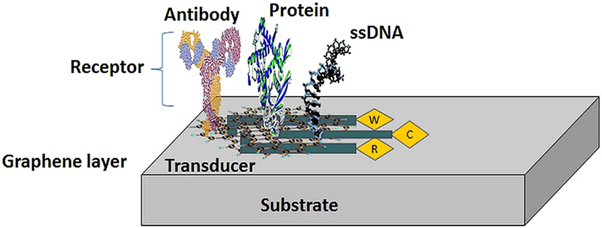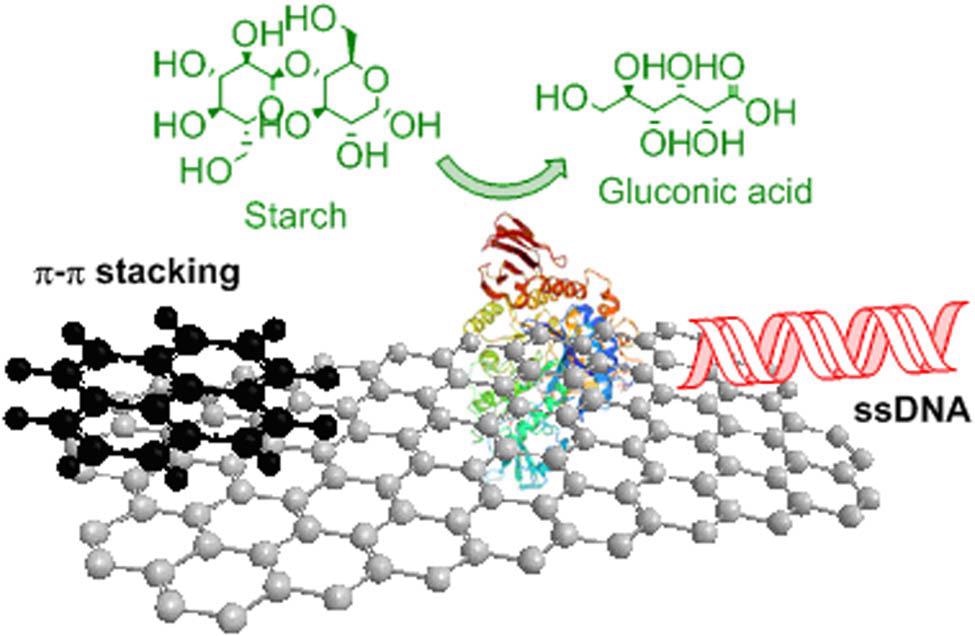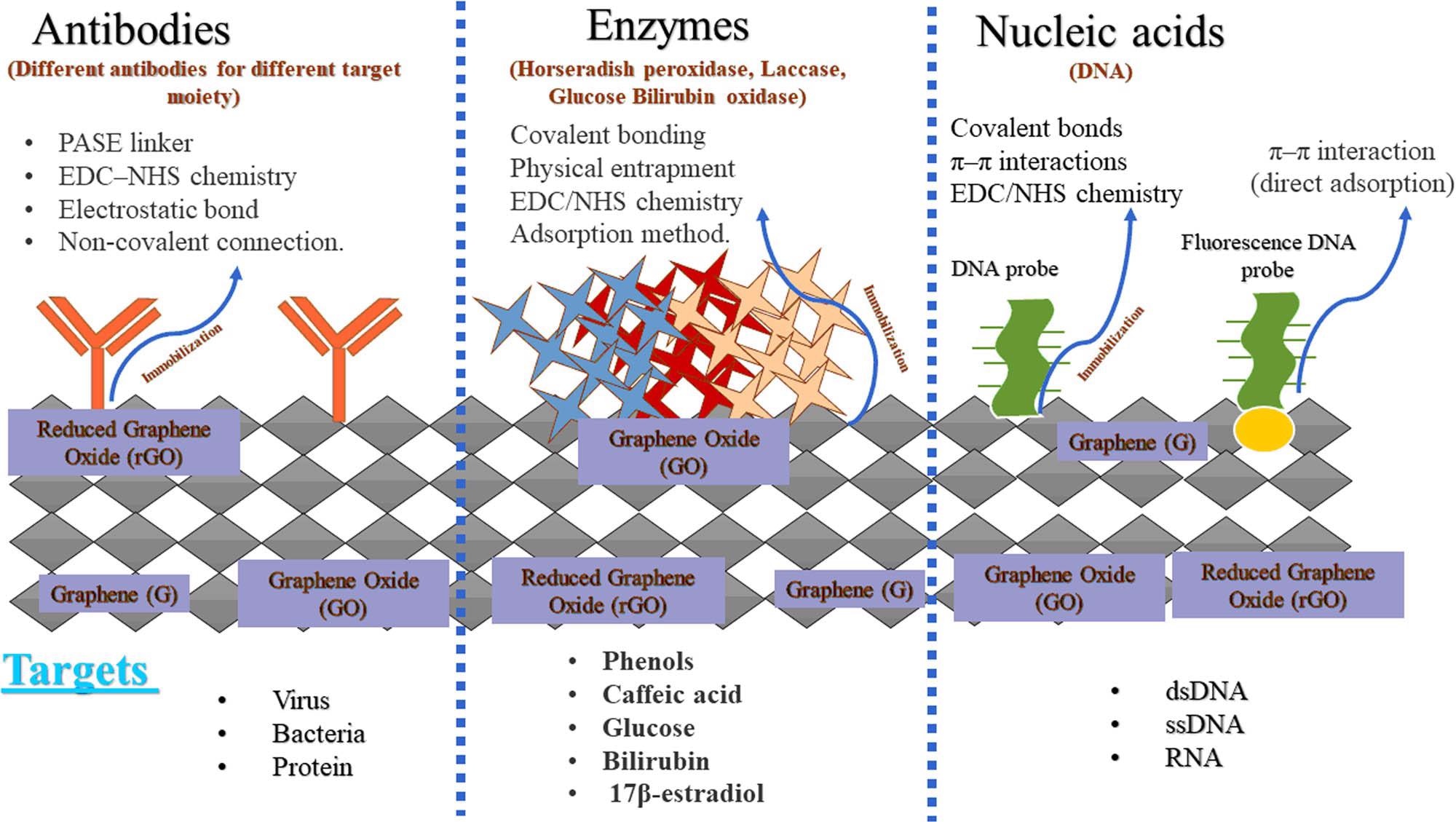Graphene's advanced application in the fabrication of nanoscale biosensors has been explored extensively by a range of researchers and a review published in the journal, Nanotechnology Reviews.

Study: Graphene-Based Biosensors for Disease Theranostics: Development, Applications, and Recent Advancements. Image Credit: luchschenF/Shutterstock.com
Graphene has gathered increasing attention over recent years with its use in various applications due to remarkable attributes, and this has also branched into innovative sensing platforms.
Why Novel Biosensors are Needed
Biosensors are significant for diagnosing disease as they can make contact with critical biomarkers that allow for diseases to be identified in patients, allowing effective management and treatment.
Conventional approaches to identify diseases include but are not limited to polymerase chain reaction (PCR), lateral flow immunoassay, DNA sequencing and microarrays, and enzyme-linked immunosorbent assay (ELISA).
While these methods can be effective with accurate and sensitive detection of disease markers leading to diagnoses, they hold critical limitations that decrease their use efficiency. These limitations include requiring highly precise and expensive instruments and reagents and preparations steps that are complex and time-consuming.
However, innovative approaches that utilize sensors can be more advantageous due to being inexpensive, simple without invasive procedures, and having highly specific techniques that are effective for detecting target biomolecules. Additionally, these novel sensors can be used for early disease diagnosis further enabling diseases to be managed and treated effectively, as well as having the ability to be used in real-time for the monitoring and diagnosis of disease, deeming them to be more useful in a wider range of applications.
Graphene Incorporation into Biosensors
The novel nanomaterial, graphene was first discovered by Andre Geim and Kostya Novoselov in 2004 and is a carbon allotrope nanomaterial formed of a single layer of graphite with atoms arranged in a honeycomb lattice.
Its unique characteristics consist of a large surface area, high flexibility as well as effective electronic transportation. The versatility of graphene comprises of its two-dimensional structure, which can be exploited for functionalization with linker molecules that increase its sensitivity and selectivity properties, enhancing its use as a biosensor candidate.
Examples of graphene that have been utilized for its biosensing capabilities include graphene oxide (GO) and reduced graphene oxide (rGO). Graphene biosensors can be used for biomedical applications such as detecting important biomarkers to diagnose cancer formations and cardiovascular diseases.
The use of real-time monitoring of disease, such as utilizing graphene-based electrochemical biosensors for implantable devices, would be revolutionary for detecting early biomarkers to prevent disease progression. This novel field of theranostics which enables the treatment of diseases with early diagnoses would be a key method of enhancing patient care to an advanced level.
Development of Graphene-Based Biosensors
Graphene can be produced through two main approaches, the top-down manufacturing approach and the bottom-up approach.
Graphene derivatives can be sourced through various carbon supplies within the top-down approach, including graphite flakes or powder. Graphene can be produced after mechanical or electrochemical exfoliation and chemical oxidation-reduction reactions.
However, the bottom-down approach is dependent on producing graphene layers from carbon atom bases and can include a number of methods such as chemical vapor deposition or thermal pyrolysis.
The approach to producing graphene is significant as it can affect the nature of the graphene result that is formed at the end, and this can therefore influence its characteristics. When graphene is created for the basis of being a biosensor, its structure can include a graphene layer that works as a transducer as well as biomolecules that function as receptors, such as antibodies, this can be seen in the visual diagram below.

Graphene biosensor device which utilizes graphene (transducer) and biomolecules (receptor). ©Alhazmi, H., et al (2021)
Biomolecules such as enzymes, proteins, DNA, and antibodies can be used for specific biorecognition in order to target analytes including biomarkers within a sample. The receptors have a very significant function in being sensitive to physicochemical changes and so can be used to produce a signal when in contact with particular therapeutic targets.
While other significant functions of graphene in various fields include electronics and healthcare with uses in sensors, quantum dots, novel drug delivery, and others, its role as a biosensor can be used to advance the field of personalized medicine.
Applications of Graphene-Based Biosensors
Conventional methods for disease diagnosis as mentioned previously are costly and require complex machinery and reagents, and most significantly, are not quantifiable in real-time.
The intriguing nature of graphene-based sensors includes a wide range of benefits to biomedical applications and with easy-to-use techniques, cost-efficient, non-toxic and high sensitivity, and selectivity characteristics, this innovation may be revolutionary for enhancing patient care.
They can be utilized for the detection of various infectious diseases from viruses and bacteria and have successfully been used in research to detect the Ebola virus, E. coli and Zika virus. Additionally, graphene biosensors which were modified with silver and gold nanoparticles were also used in the detection of Salmonella typhimurium, hepatitis-C virus (HCV) and avian influenza virus.
The ability to modify graphene biosensors can further enhance its use with other proven research illustrating the modification of these versatile biosensors with dendrimers, polymers, and cyclodextrin in order to diagnose celiac disease, human immunodeficiency virus (HIV) and cholera.

Some common noncovalent functionalization showing pyrene–graphene, glucose oxidase–graphene, and ssDNA–graphene hybrids. ©Alhazmi, H., et al (2021)
Future Outlook
The potential of graphene-based biosensors is tremendous and with successful research in this field detecting various infectious diseases, the translation into clinical use would be revolutionary.
However, with limitations such as its ability to adsorb nontarget molecules may cause false-positive detection, especially if noncovalent functionalization methods are used. Additionally, the incorporation of biomolecules onto the graphene layer may be affected by factors such as temperature, pH, salt concentration, as well as the intrinsic properties of graphene itself.
This area of research may still have obstacles to climb, however, its significance in theranostics is promising, especially for use as potentially implantable devices for real-time monitoring of disease.

Applications of biomolecules-immobilized graphene-based biosensors in the detection of target molecules. ©Alhazmi, H., et al (2021)
Reference
Alhazmi, H., Ahsan, W., Mangla, B., Javed, S., Hassan, M., Asmari, M., Al Bratty, M. and Najmi, A., (2021) Graphene-based biosensors for disease theranostics: Development, applications, and recent advancements. Nanotechnology Reviews, 11(1), pp.96-116. Available at: https://www.degruyter.com/document/doi/10.1515/ntrev-2022-0009/html
Further Reading
Sekhon, S., Kaur, P., Kim, Y. and Sekhon, S., (2021) 2D graphene oxide–aptamer conjugate materials for cancer diagnosis. npj 2D Materials and Applications, 5(1). DOI: https://doi.org/10.1038/s41699-021-00202-7
Disclaimer: The views expressed here are those of the author expressed in their private capacity and do not necessarily represent the views of AZoM.com Limited T/A AZoNetwork the owner and operator of this website. This disclaimer forms part of the Terms and conditions of use of this website.